There has been one big change since our report last week that city officials are in “wait and see” mode on the planned development that will gut a block of active retail and apartments on E Pine at Melrose. We’ve already offered one explanation of why the block matters for the community and small businesses in the area. Below, Schemata Workshop’s John Feit tells us more than the Bauhaus building is worthy of being “saved.” — jseattle
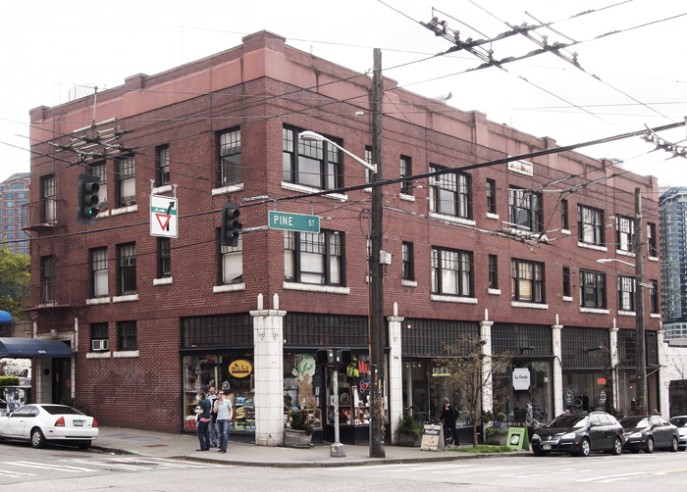 The Pinevue Apartments (Image: John Feit)
The Pinevue Apartments (Image: John Feit)
The heritage structures along Capitol Hill’s Pike/Pine corridor house mixed use, residential, and commercial tenants. The most prominent and best preserved of these buildings are the large number of former auto showrooms, the so-called auto-row buildings that are comprised of large-span ground floor spaces with high ceilings. Some heritage structures originally housed, as they do today, a mix of uses with ground floor retail and housing above. Some are strictly residential. These original patterns of development, or more specifically the pattern or planning for the building’s use, are reflected in their elevations. In those buildings along Pike/Pine that were originally commercial, the ground floor has expansive amounts of glass which are crisply framed by the building’s structure, with the resulting clarity carried out on the upper floors with little variation. A typical example of this rational, commercial frame expression can be seen along Pine Street, between Crawford Place and Summit Avenue.
Capitol Hill’s residential buildings too, have a similar uniformity of expression between the ground and upper floors. In residential buildings, the expression was one of smaller, individually framed or so-called ‘punched’ windows, with the apartment building on Pine Street and Belmont being a fine example. 
A unified expression between a building’s base and top was clearly not the primary goal for the designers of Pine Street’s Pinevue Apartments, making it a rarity among our heritage buildings. Next to the Melrose Building (home to Bauhaus), and threatened by the same re-development project, I would argue that architecturally the Pinevue Apartments are just as significant, and just as worthy of preservation as is Melrose. Unlike the above mentioned typical Pike/Pine buildings, Pinevue presents us with a unique expression between lower and upper floors – an interesting merging of the expression of ground floor frame (commercial) and upper floor punched opening (residential). And though there are other buildings on the Hill that seek a strong distinction between base and top, none shows the same level of determination in differentiating their two uses as does the Pinevue.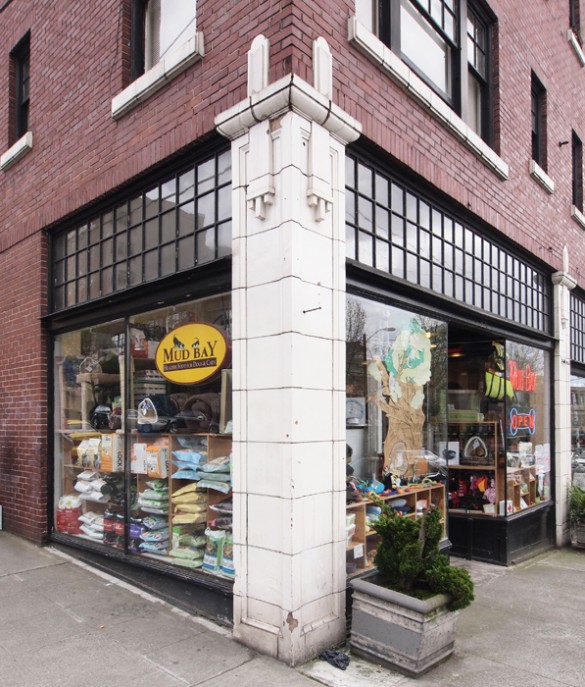
The Pinevue’s ground floor columns bear little resemblance to — or provide ordering for — the upper floors’ rather randomly spaced and grouped punched openings. This singular expression of the columns is furthered not only by the white of their terra-cotta but also by their framing the black painted storefront, not to mention being quite different than the dark red brick above. The fact that the columns are just slightly in front of (proud of) the brick is a wonderful detail that clearly punctuates the difference between base and top.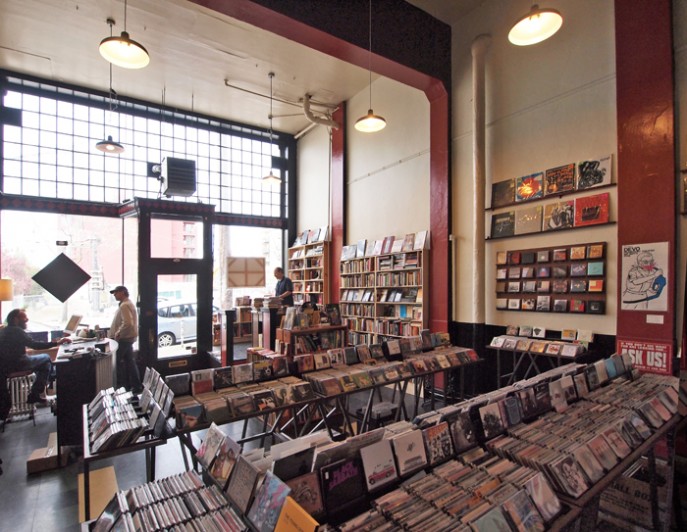
Despite these larger design moves that emphatically state the difference between commercial and residential uses, the Pinevue’s architects also looked to provide some unity to the upper and lower floors, but in a much more subtle way than one typically encounters along Pike/Pine, and in a way that did not conflict with the overall goal of programmatic differentiation. The small divided lights above the storefronts (especially handsome when seen from inside the retail spaces) are repeated on the residential windows above, whose terra-cotta sills are a match to the material of the columns below. Another nice detail that weaves together the entire Pine Street façade is the crenelations along the parapet that are of similar dimension – but different materiality – than the terra-cotta columns that they line up with below. This confident uniting of what on the larger canvas are disparate parts with the smallest of details reveals a level of sophistication and maturity by the Pinevue architects that make this building one of the Hill’s finest buildings (as well as presenting a lesson for restraint for us to treasure and advocate for).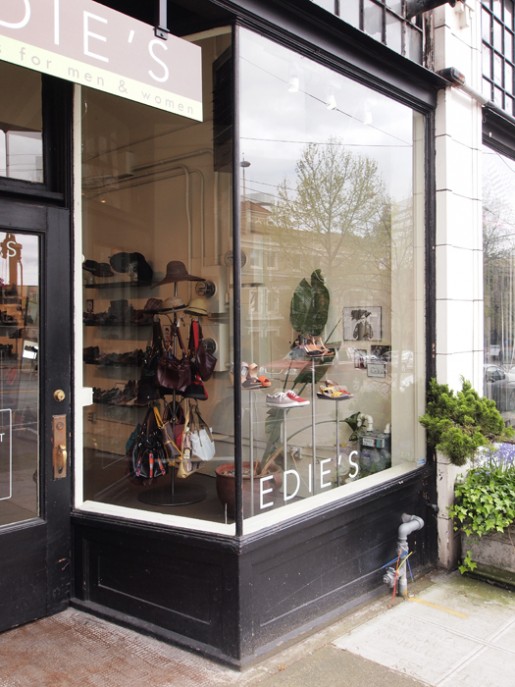
The Pinevue’s intact original retail design leaves no question that it was built expressly for smaller tenants, tenants that it continues to successfully house to this day. The architectural clues are abundant, and include numerous doors framed by a rarely seen diagonally oriented storefront, complete with the requisite delicate corners. These angle storefronts have served the tenants well, as they provide greater visibility of their wares to passersby, and stand in contrast to the typical, larger, and planar storefront retail spaces along Pike/Pine. The Melrose Building also has it original storefronts intact, resulting in an entire block-frontage of intact heritage structures with no significant sign of alteration, speaking to the ability of this quality pair of buildings to continue to successfully attract retail tenants throughout their almost 100 year histories. A noteworthy achievement indeed.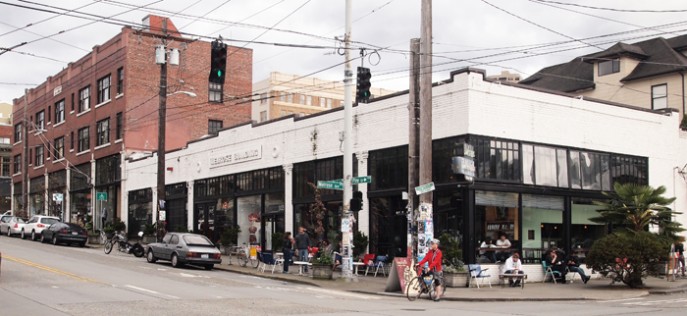
What to do? Ways to get involved
- Pike/PIne Urban Neighborhood Council https://www.facebook.com/PPUNC
- Densify Don’t Destroy Capitol Hill https://www.facebook.com/DensifyDontDestroyCapitolHill
- Mayor’s Town Hall, May 8th at Seattle Central



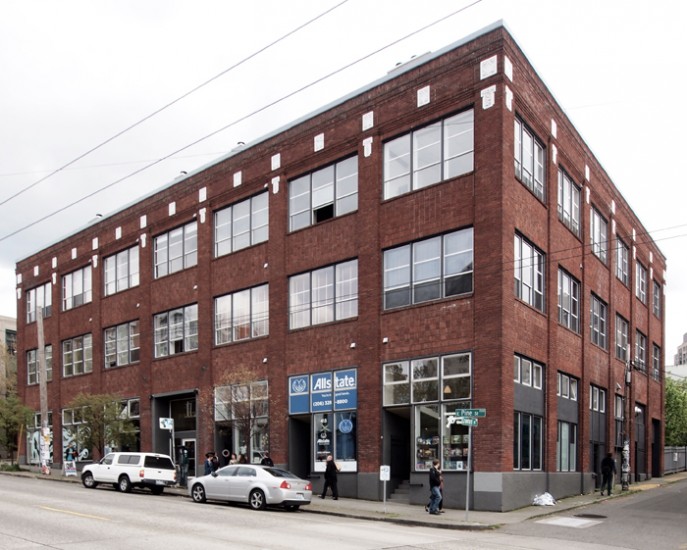
Sounds like this battle is already won – the outside architectural elements will remain similar if not the same, and Bauhaus will return in the new building.
Ben, Ben, Ben, did you not SEE the interiors of this building. They are lovely. Assinine preservation of storefront ornamentation is NOT preservation of the structure and it’s insulting that we’re still stuck in that cheap form of pseudo-preservation nonsense. I think most of us in the ‘hood want our beautiful buildings to stand, as they are or fixed up toward what they were. NO ONE MAKES BUILDINGS LIKE THIS ANYMORE! And they’re good buildings. Why would we destroy that?
Funny, I’ve never heard of anyone crushing a perfectly good 1970 Porsche 911 just because they want to replace it with a brand new 2012 model.
Why don’t people value our fading historical achievements. Lord knows (high-tech notwithstanding) we seldom match them anymore.
What about all the other small businesses? New construction typically builds much larger retail space and charges much more per square foot. That’s why new mixed use has Desert Sun & Game Stop instead of le Frock and Wall of Sound.
The sad part is that there are dozens of really shitty buildings around the hill, on major roads and just one block off, that most of us would be more than happy to see torn down and replaced with something a few stories higher. Add density, just do it without compromising what makes the neighborhood worth living in—that’s the character and businesses currently on Pike and Pine.
Large, ugly buildings that take up an entire block are not going to draw people to the area.
Exactly–it’s sickening to see these classical examples of mixed-use urban architecture in danger of being eviscerated, even if they aren’t torn down. Once they’re gone, they’re gone, and they’re not coming back. Buildings like this are living history, and seeing photos of them in a book or on a website is just not the same.
I’ll believe it when I see it.
Feit once again lays out a compelling argument for why design matters. Our myoptic City Council and planning board just don’t get it. Design standards that provide incentives for innvoative new work AND that preserve worthy heritage structures create sustainable and vibrant communities. The current Seattle zoning seems to promote lethargic neighborhoods full of anomie. I don’t know what to do about that. Feit or others: Any concrete suggestions?